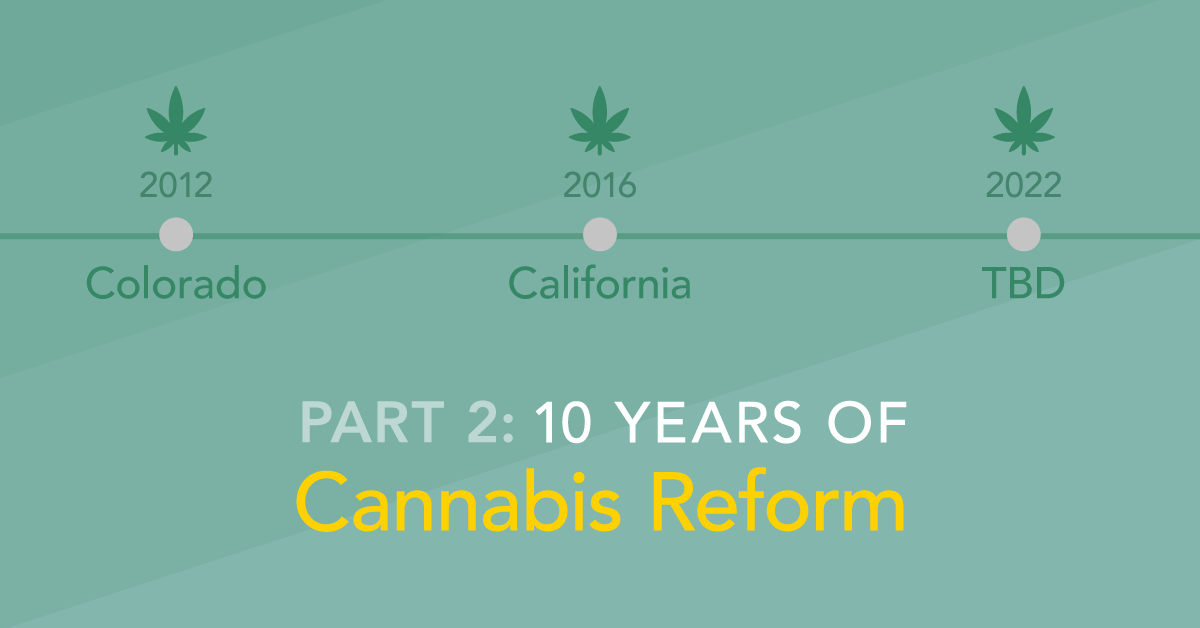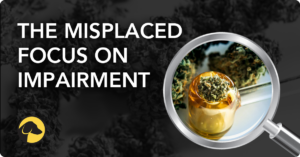
10 Years of Cannabis Reform – Part Two
When Colorado legislators legalized recreational cannabis use in 2012, they didn’t foresee one specific issue related to cannabis testing that would be troublesome for employers 10 years later.
Employers have continued using the same cannabis tests designed in, and for, an era of zero-tolerance of illegal cannabis use. Put simply, drug testing technology hasn’t kept up with new laws – it’s 10 years behind.
The unintended consequence of this circumstance is that even employers based in states where cannabis remains illegal are facing many of the same issues as employers based in states that have legalized recreational use.
But the question remains, why?
10 YEARS AGO
In Part One of a series examining a decade of impacts resulting from Colorado’s historic decision to legalize recreational cannabis use1, I started a conversation about unintended consequences. This time, I’m expanding on how Colorado’s decision continues to impact business operations like workplace drug testing, safety initiatives, and employee retention.
Let’s return to 2012, when Colorado decided to legalize recreational cannabis.
At that time, the primary goal of workplace drug testing was deterring substance use during the workday. Employers were primarily testing urine for cannabis (and other drugs) because it was the Department of Transportation (DOT) standard. Urine has a window of cannabis detection (approximately 30 days) which was ideal for employers because they didn’t want employees using an illegal substance such as cannabis. In addition, when cannabis use was illegal nationwide, employees didn’t question whether a positive result linked to use during the workday or not because using illegal substances simply wasn’t tolerated by most employers.
When Colorado legalized recreational cannabis use, hair testing was also used for cannabis. This method wasn’t used as widely as urine testing, but some employers saw benefits to this approach because the cannabis detection window was even longer – three months. Once again, the illegal status of cannabis trumped the fact that detection in hair could last up to 90 days.
In 2012, some employers were also using oral fluid cannabis tests because sample collection was easier than collecting hair or urine. According to research by the AAA Foundation,2 oral fluid detection windows for cannabis can last up to 48 hours – long past the peak impairment window of just a few hours as identified by the National Highway Traffic Safety Administration (NHTSA).3 Once again, the multi-day detection window didn’t ruffle any feathers because the goal was to deter and detect a substance that was illegal to use at any point – when it was consumed was irrelevant.
CONVENTIONAL CANNABIS TESTS
While oral fluid, urine, and hair testing are highly effective for many substances, their long cannabis detection windows make them less effective for cannabis testing today – creating issues that didn’t exist 10 years ago when recreational cannabis use was illegal in every state.
Why? Because now that cannabis can be legally used by most U.S. adults, employers must consider WHEN employees use cannabis. Employers want to deter employees’ use during the workday, but the cannabis detection windows for oral fluid, urine, and hair all extend well beyond the workday, which means that employees could be penalized for legal use outside of work hours. This is something Colorado lawmakers didn’t consider in 2012 – maybe because, at the time, there wasn’t a drug testing solution that could isolate use within a few hours of the test.
NEW LAWS CREATE THE NEED FOR NEW TECHNOLOGY
Fortunately, cannabis testing technology has finally caught up with its legal status. Cannabis breath testing technology will be introduced this year with a detection window limited only to the workday. This will allow employers to maintain safety by continuing to deter employees’ cannabis use just prior to or while at work and promote employee fairness by only detecting within a few hours of use. Employees won’t need to fear risking a positive result for using cannabis legally during a vacation or at other times that don’t impact their workday.
Breath testing helps to ensure a fair approach to maintaining everyone’s safety while respecting the privacy expected when making legal and responsible choices. A cannabis breath test like the HOUND® MARIJUANA BREATHALYZER should address one of the primary issues created when Colorado legalized cannabis 10 years ago – how to balance SAFETY and FAIRNESS™. This new technology will provide objective data and help employers make more informed decisions regardless of where their state is in terms of cannabis legalization. Finally, after a decade of unintended consequences, cannabis breath testing will be available to satisfy employers’ workplace drug testing needs in the future. It will also satisfy the needs of employees who want to be treated fairly and to maintain their privacy if they choose to legally use cannabis before bedtime or while on vacation.
For more insight from our team at Hound Labs, sign up for our monthly newsletter, the Hound Herald.
Footnotes

August 4, 2022
By JENNY LYNN
Co-Founder
Share












